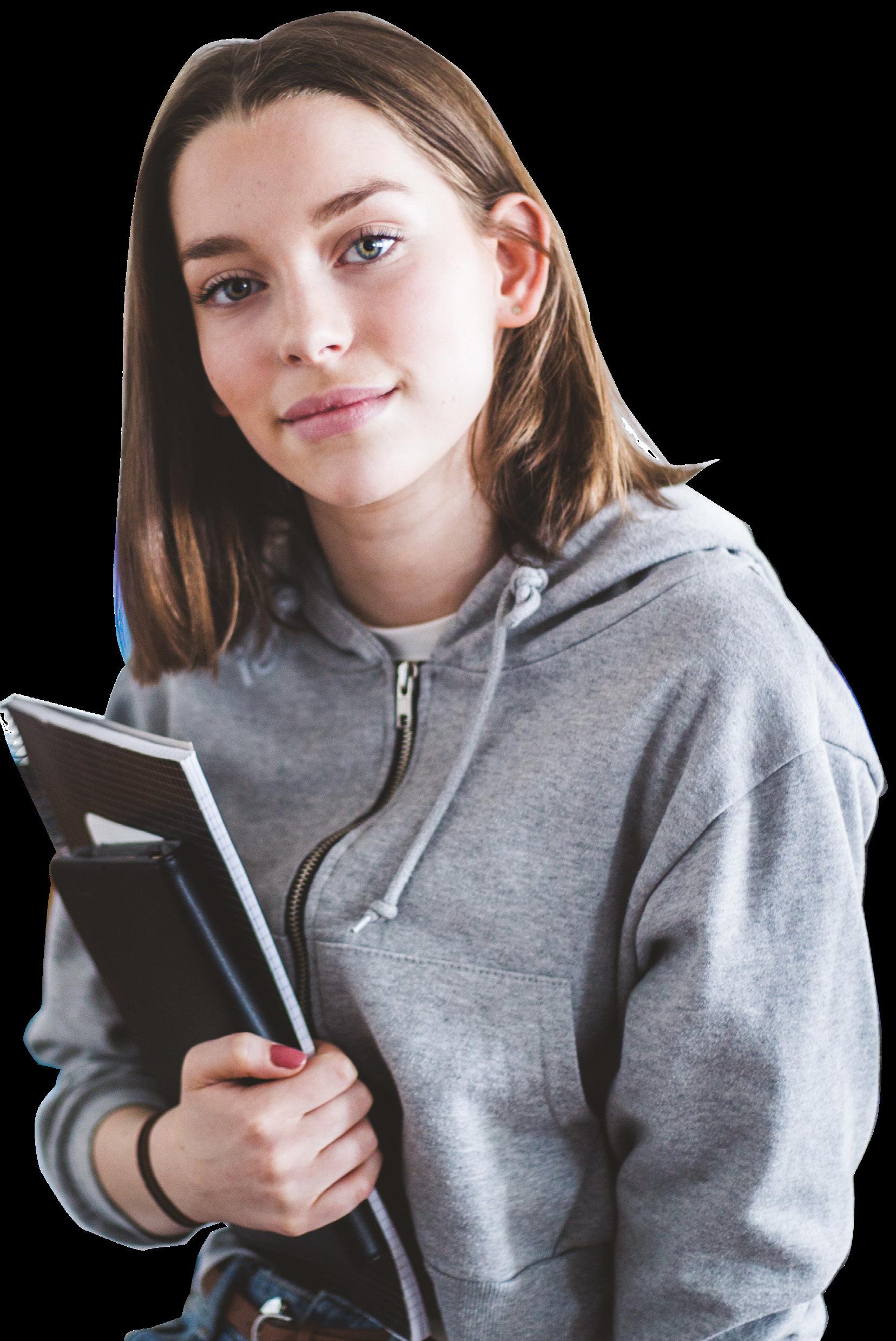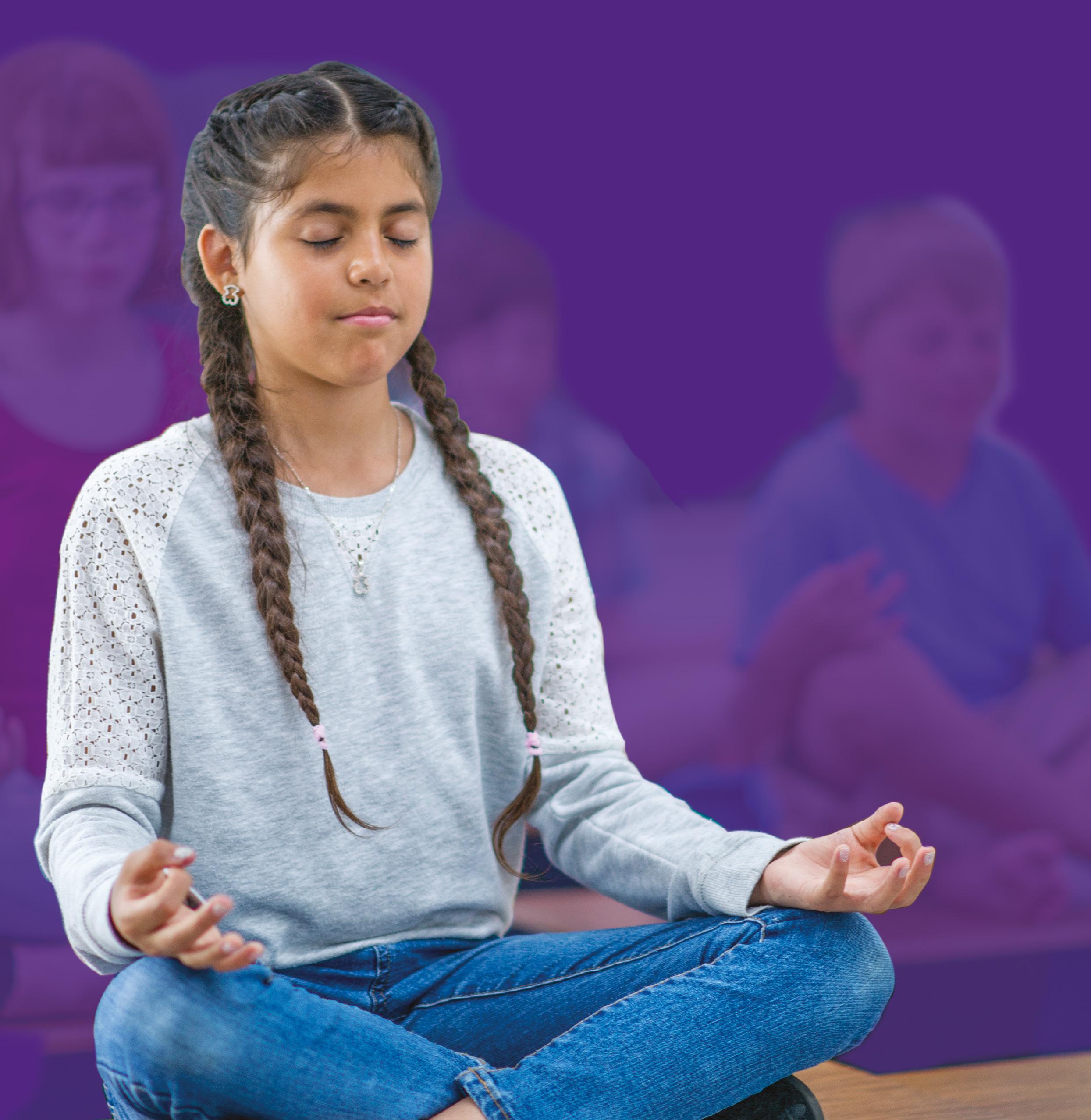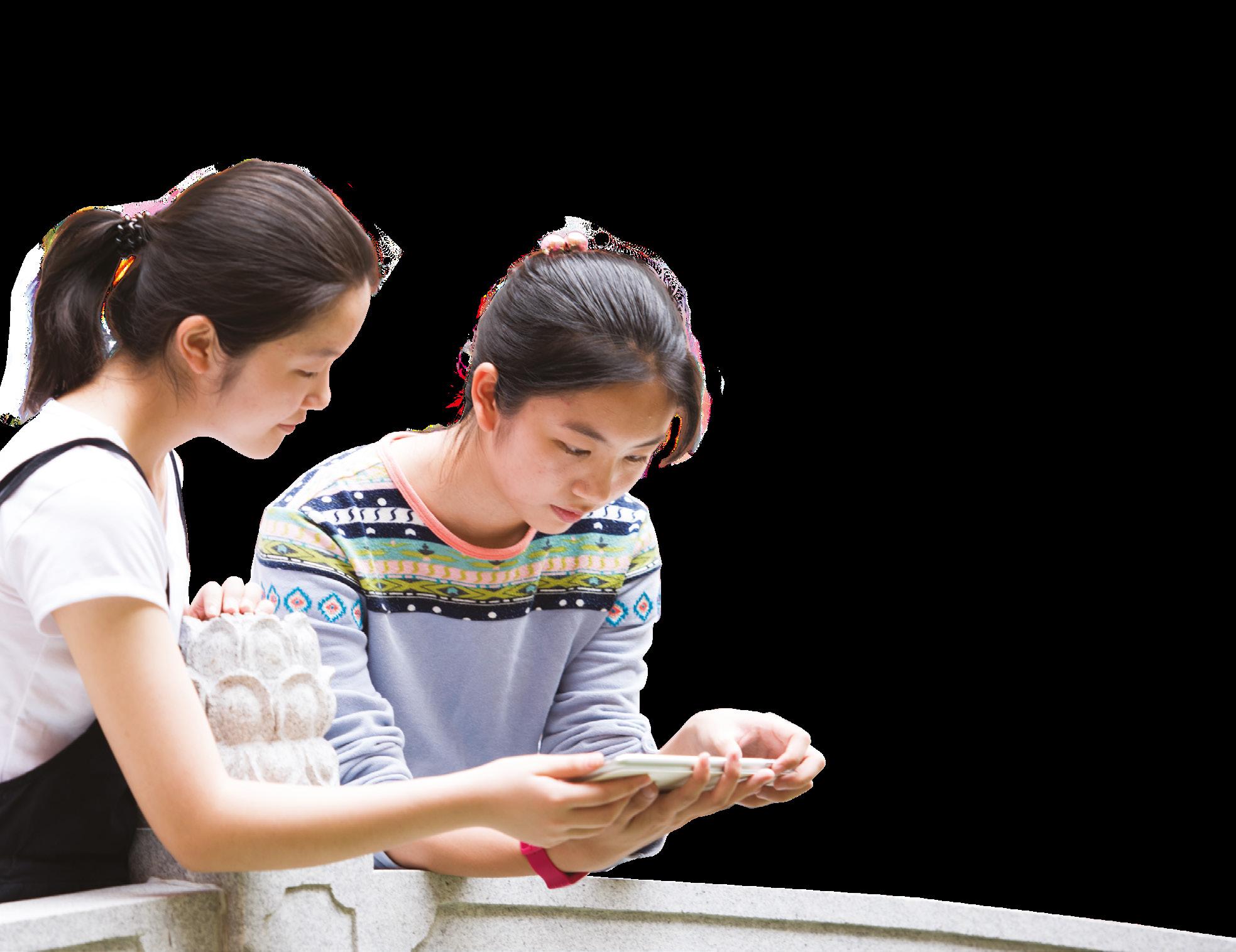
42 minute read
Differentiation via open tasks by Dr Julia Reckermann
DIFFERENTIATION VIA OPEN TASKS
By Dr Julia Reckermann
Dr Julia Reckermann is a junior professor for TEFL at the University of Paderborn, Germany. She has been working in the TEFL context at different universities and schools in Germany since 2009.
Teen EFL classes are heterogeneous in their composition and it is the teacher’s task to cater to the learners’ different needs through individualisation and differentiation. Ideally, all learners further their FL competences while working on the same topic, but at their individual levels of ability and interest. One idea of how this challenging demand can be put into practice is the use of open tasks, or target tasks as suggested by task-based language teaching (see, e.g., Nunan 2004). Such tasks are used at the end of a teaching unit, so that the learners can apply and individually expand their knowledge about a certain topic. The goal of these tasks is clear, but the process of how to reach this goal as well as the eventual outcome is open. This serves for a high level of
CORE CHARACTERISTICS OF OPEN TASKS
3 the content/topic is relevant for the learners and links to their previous knowledge.
EXAMPLES OF SUCH TASKS FOR THE TEENAGE EFL CLASSROOM INCLUDE:
3 they are real-life tasks.
3 they challenge ALL learners and allow them a feeling of success.
3 they can be worked on and solved at different levels of proficiency.
3 there is a clear goal, but content
foci, learning process and eventual outcome allow for individuality.
3 the learners work on them mostly autonomously.
3 they are supplemented by different means of support.
3 fluency goes before accuracy.
(see Reckermann, 2017, p. 209. Based on Ellis, 2013; Leisen, 2010; Müller-Hartmann et al., 2013)
Present your favourite hobby / YouTube-star / city / film / book / comic
Prepare your standpoint for a discussion on climate change / social media (over) use / school uniforms
Write a letter / postcard / e-mail / text message to a music band / influencer / politician / film producer
inner differentiation and allows the learners choice and autonomy in various respects. Firstly, there is a core topic (e.g. hobbies), but the actual sub-topic (e.g. basketball) is chosen by the learners based on their interests. Secondly, the outcome is, at least to a certain extent, open and up to the learners’ preferences and competences. For example, the presentation of one’s favourite hobby can be done via a poster, an oral presentation, a PowerPoint, a video or a picture. Lastly, the working process that leads to the final product is open, in that the learners can work independently or in small groups, can use different sources of information (books, internet, etc.), can work at their individual competence levels (e.g. using simple vs complex sentences) and seek support whenever needed. Bearing in mind that teenage learners sometimes struggle with their emotions, decentral working phases allow them a certain space to ‘draw out’, while at the same time they are allowed to organise their own learning. Also knowing that teenagers do not necessarily favour speaking in front of the class, possible presentations can take place in smaller groups, in writing or in the form of a prepared video or podcast. To ensure that all learners are rightly challenged and work at their own levels, the teacher carefully guides and scaffolds them and prepares support. Supportive devices can include: tip cards with crucial vocabulary, chunks, sentences; books, magazines or the internet for collecting information; materials on the core topic, e.g. pictures, informative texts; a self-assessment grid; a planner that helps the learners to organize their working phase; etc. Of course, such an open task is set into a meaningful cycle of pre-, target- and post-task activities. Pre-activities raise the teens’ interest in the topic and introduce them to crucial language competences and topic knowledge. Post-activities include the presentation of results and a reflection of the learners’ individual learning process and progress. Particularly reflection and self-assessment are core elements of the work on open tasks. On a regular basis, the learners should, in cooperation with the teacher, reflect on their stage in the working process, on difficulties and successes, on a possible gain in competence as well as on possible prospects for future projects. This can be done orally, either in small groups or with the whole class, or more individually, e.g. in a project log. For selfand teacher-assessment, learners need clear and transparent criteria so that they know what is expected from them. This is not necessarily easy, since as soon as teachers leave a lot of aspects up the learners’ choice and ability, outcomes will vary greatly.
Overall, the use of open tasks can be one idea to meet teen EFL learners’ individual preferences, interests and abilities and allow them to gain target language competences as well as life skills (autonomy, self-assessment, social skills) at their individual levels and based on their interests.
Helping teens become their own life coaches
By Herbert Puchta
Dr Herbert Puchta is a writer of course books and other ELT materials and a professional teacher trainer. For almost three decades, he has researched the practical application of cognitive psychology in EFL-teaching. Herbert has co-authored numerous textbooks and resource books including THiNK, English in Mind and MORE!


Teaching English successfully to secondary school students is a rewarding activity. It develops their ability to communicate well in the world’s most widely spoken language, and provides them with key communicative competencies that they will be able to draw on at various stages, and in various situations, throughout their lives. However, if we want our students to flourish in a challenging and fast-changing world we need to help them develop competencies beyond language, as shown in the Cambridge Life Competencies Framework. We need to help our students to foster their critical and creative thinking potentials, utilize their full potential through learning how to learn, and develop their
collaborative competencies and social responsibilities. Teens can be a challenge to teach at times, and insights into the adolescent brain help us understand why this is the case. But these insights, coming from the ‘new science of adolescence’ (Steinberg 2015), also make it clear that the teenage brain has an amazing capacity for change. That offers us teachers some unique opportunities to assist our students in their personal development, and suggests an approach to teaching that goes beyond language and language skills into topics that challenge our students into thinking about issues that affect them.
The process of becoming a responsible adult is dramatically influenced by the development of two structures in the teenage brain: the limbic system and the prefrontal cortex. The limbic system is all about emotions and the drive to have fun – without pausing to think what the possible consequences might be. The prefrontal cortex, in contrast, is about higher-order brain functions; it is connected to mature adult thinking (which pausing and thinking are part of!), and developing a sense of responsibility. What brain science shows us is that the plasticity of the teenage brain is extraordinary, which means that as teachers we are in a very good position to challenge our teens cognitively. But this is not a call for stricter tests or bigger workloads. Rather, it’s an appeal to present your students with thought-provoking content that they will perceive as highly relevant to their lives, present and future. And it’s a plea to support the development of their brains by helping them learn how to pause for breath and start thinking, rather than reacting emotionally. It’s a plea for you to involve your students in thinking tasks that they will find challenging, and also for you to set up constructive interactions enabling them to express their (thought-out!) opinions, and develop their own thinking further by exploring their classmates’ similarly thought-out opinions. The ability to differentiate between subjective opinions and facts, instead of acting and reacting impulsively and emotionally, is one of the criteria that lie at the heart of maturity. But a teen’s inner world, with its strong emotional dynamics, may cause them to express opinions in a spontaneous rather than well-thought-out manner (Nobody likes me! My parents are never happy with what I do! Adults just don’t understand teens! etc.). As a consequence, young people frequently show a strong tendency to overgeneralize, which can lead to prejudices and discrimination against others.
For us to support our teen students in gradually becoming responsible citizens of this world requires us to help them recognize their instinctive limitations, so that they can look at issues from a wider perspective and avoid jumping to hasty conclusions. Only then will they gradually develop into their own life coaches with a range of intelligent and constructive ways of thinking and acting available to them. Of course, the emotions will still arise, but the mature brain will then modify its owner’s behaviour to take into account the needs and sensibilities of other people.
Tell them what hasty conclusions are (i.e. opinions about large groups that are formed based on experiences with only a few members of the group). Invite them to write up a list of hasty conclusions they have come across (about certain groups of people, including their own group).
Get them to find concrete counter-examples for each of the hasty conclusions (e.g. Hasty conclusion: People who live in big cities are less caring than people who live in the countryside. – Counter-example: I live in a big city and I know people who are very caring.)
Ask them how they could react properly (i.e. without becoming emotional) when confronted with other people’s hasty conclusions about themselves.
Get them to explore different reactions in role plays. Encourage them to search for and challenge their own hasty conclusions.
A LITTLE TIP! When students get challenged to talk about real world issues and notice that what they are saying is taken seriously by their teacher, they perceive the learning process itself as more relevant to them, and will also in consequence develop important life competencies.
An infographic on animal senses
1 Work in pairs. Can you answer the questions? 1 Which continents do elephants live in? 2 How do they know where they are going? 3 How strong is their trunk (their long nose)? 4 What do they use their ears for?
2 Read the infographic and check your answers to Exercise 1.
How to research
3 Which of these things should you do when you research? Tick the correct answers. 1 Decide the main information you want before doing research. ✓ 2 Use questions in search engines, e.g. How well can elephants see? 3 Read articles from start to finish. 4 Read the contents list of articles or the titles of sections and then decide what you need to read. 5 Make sure the information is fact and not opinion. 6 Only check information on one site. 7 Take notes as you read.
Elephants and their amazing senses
Elephants’ eyes are on the side of their head and have three eyelids, one above the eye, one below, like humans, and an almost transparent one they use to keep dust, dirt and water out. However, their eyes aren’t very strong. They normally use their trunks to know where they are going. In fact, the leader of a group of elephants is sometimes blind.

Elephants can hear extremely well because they have big ears. They can hear faint sounds, including the calls of elephants up to 1.5 km away. Their ears are about 1 / 6 of the size of their bodies. They also use them to keep cool. • Two species: African and Asian • Males: 2,700 to 6,300 kg • Females: 1,800 to 3,600 kg • Lifespan: approx. 65 years • 100,000 muscles in the trunk
Elephants have to move their trunk around and smell the air all the time in order to find water, so they have an excellent sense of smell. They can detect water up to 12 km away.


PLAN 4 Work in groups. Choose an animal you want to research. Decide who is going to research which sense. Remember to: • have a title for your infographic • use photos • make the headings and the contents easy to read • use numbers (21, 2/3 etc.) instead of words (twentyone, two-thirds). PRESENT 5 Present your infographic to your class. Remember to include interesting facts, visuals and headings, modal verbs and vocabulary from this unit. CHECK 6 Look at the other groups’ infographics. Tell the group members which information you find most interesting.
Elephants use their rough trunks to explore the environment and care for their young. They also use it to fight. The trunk can lift objects that weigh up to 250 kg. They can also sense tiny vibrations in the ground with their feet. Scientists think this must be the reason why many survived the Asian Tsunami of 2004. They felt the vibrations of the earthquake and moved to higher ground.
Ceri is a freelance teacher, trainer and materials writer. She’s particularly interested in student-centred materials and activities. She writes about her experiences and her experiments on her blog, Close Up (www.cerij.wordpress.com).
What is fluency, and can it be taught?
WHAT IS FLUENCY?

We often use the word “fluency” quite loosely without thinking about exactly what it means. In dayto-day speech we equate it with being able to communicate comfortably and easily in another language. We may ask someone living in another country if they are “fluent in the language yet?”, meaning not only do they speak, but also do they understand the language when they hear it spoken. We picture them coping confidently in a range of situations, taking part naturally in conversations, functioning effectively in the language. Adverbs like “naturally”, “comfortably”, “easily” describe the psychological state of the language user as much as their ability or competence. It is an idea that is bound up in emotions and perceptions as much as, if not more than, with the actual use of the language. We see “fluency” almost as a quality of the speaker rather than a skill that can be learned. When talking about teaching and learning languages, this can cause problems. Let’s take a closer look at what fluency is from a more objective point of view. When researchers study fluency, they use two fairly simple measurements; one is the rate of speech, how many syllables you produce over a given time, and the second is the length of utterances, how many words you can produce in a continued string of speech without hesitation or pauses. This gives us a clear idea of what fluency in speech sounds like. But it’s not enough to measure speed and length, we also need to measure coherence and effectiveness. One thing is being able to produce a string of words, another is that the string of words is actually comprehensible to someone who’s listening. So fluency is flow, but it is flow with meaning. This also introduces another factor, the listener. In order to be effective in our communication, we also need to take into account who we are talking to, so that our speed of delivery and our length of utterance is appropriate for our listeners. When we include this social aspect too, it becomes clear that fluency is a complex and complicated concept!
CAN FLUENCY BE TAUGHT?
So, to the second question: can it be taught? And I think the easy answer is yes, or at least, that, as teachers, we can create the conditions that allow our students to develop fluency. And how do we do that? Well, it’s a process and there’s no magic wand. It takes time and patience, like all learning. There are some basic steps we can follow: Fluency doesn’t happen overnight. Neither is it a fixed quality. It varies according to the task and the audience. We can be much more fluent talking to a group of friends about a familiar topic than we would talking to a stranger about a subject we’re not sure about. And so, we need to train for fluency in incremental steps, planning for success in familiar situations, building on that success to push our students further, always making sure we give them the language tools they need to succeed.
A llow time for feedback on perceived difficulty of the task, and ease of communication. D iscuss any obstacles and perceptions. Did the student’s feel more/ less fluent? Why? A llow time for preparation and scaffolding of the language before the task – this allows the students to feel more confident when they come to perform the task, and confidence has a direct effect on fluency. It immediately reduces hesitation and facilitates flow. 3 4 D esign tasks that create a need and/or an interest in communicating – and that means both speaking and listening – it is as important that the speaker has something they want to say as it is that the listener has a reason to listen to them. WHY IS FLUENCY IMPORTANT? We still need to address another important question. Why is fluency important? And why is it important to our students? Fluency is the bedrock of how we are perceived as communicators. And the bottom line for all our students is communication. They are studying a language in order to be able to use it – and to use it effectively. This is what our teenage students want from their English lessons, from their English teachers: to be able to function competently in English, not only in the classroom, but ultimately out in the big wide world. They want to be able to take an active part in the global online communities that are such an important part of their teenage world, be that social media, gaming or peer learning through open access forums. Our students are keenly aware – possibly more than we are – of the importance of communication, in their mother tongue, and also in English. Excellent communication skills is the number one skill they need to take with them into the world if they are going to succeed, whatever their field. And communicative competency in English, let’s call it “fluency”, is the key to being able to study and work in an international context, whether at home or abroad. This is what our students are aiming for. This is their number one priority in the English classroom. And it is our number one priority as teachers to help our students become successful, competent, fluent communicators. 2 A llow for plenty of time and space in class for students to attempt to communicate freely i.e. include spoken activities where the students decide what they want to say and how they’re going to say it . 1
LEARNING ENGLISH AND FUTURE SELVES
Niall Curry is a lecturer at Coventry University specialising in applied linguistics, corpus linguistics, and language pedagogy. He lectures in academic language, language analysis, and language pedagogy.
Language is alive and changes with the times. As language professionals, we have the difficult task of ensuring that we teach up-todate language to our students. In the context of English language teaching, the difficulty arises from the fact that English language pronunciation, grammar, and vocabulary, for example, are constantly evolving and changing. Often, such change occurs in order to remove redundant and less useful language, or by borrowing directly from other languages. Other factors like culture, migration, and globalisation can also impact languages and cause them to change and adapt to new contexts and uses.
Whatever the reason, keeping up with language change is important for teenage language learners because mastery of English will be integral to their success in future study and work internationally. As educationalists and teachers, it is our responsibility to equip our learners with knowledge of contemporary English. To this end, this article presents two research-informed tasks that can help raise learners’ awareness of language change.
TASK 1: LEARNING NEW LANGUAGE (AND WHERE TO USE IT!) The first task aims to raise learners’ awareness of language and the contexts in which different words are used. Drawing on corpus research at Cambridge University Press, there are a number of changes that could form the basis of this task. For example, adverbs like “well”, “so”, “like”, and “literally” in British English have changed considerably over the last two decades. 20 years ago for example, ‘literally’ was mostly used in a literal sense, but now primarily refers to unreal events with examples like ‘I literally haven’t moved all day’. After teaching these new uses of words, the task is as follows:
1Students pay attention to the use of words like ‘literally’ in everyday life, games they play, and media they consume. 2 Students note how often they hear these new words or uses over the course of one week. 3 Using a checklist, like the example given here, students must capture extra information surrounding the new words and new word uses, e.g. who says them, to whom, and in what contexts?
At this point, it is a good idea to have a classroom follow-up and get students to present their findings to one another. Taking a learner-centred approach, this will be an opportunity to help students unpack their own language and discuss the importance of not only keeping language up to date, but also of thinking about where to use it. It is also worth considering the formality of the language, which may not be clear to your students. Being aware of formality in English is particularly important for teenagers because they will need to know how to speak to employers and university professors in English if they are considering studying and working in English-speaking countries in the future.
Student Name: Class: Task: Learning New Language (and where to use it!)
Word: non-real ‘literally’ No. of uses: 36 Who said it: friends, family To whom was it said (e.g. friend, teacher): friends, family, YouTuber Where did you hear it: at home, at school, online funny video
Word: No. of uses: Who said it: To whom was it said (e.g friend, teacher, YouTuber): Where was it said:
Word: No. of uses: Who said it: To whom was it said (e.g. friend, teacher, YouTuber): Where was it said:
TASK 2: SPEAKING FOR THE 21ST CENTURY For the second task, the goal is to support the development of spoken language as well as the acquisition of new language. First, students should be pre-taught a number of changes in language use. This pre-teaching should highlight both the new uses and what it was like before. This could refer to changes of word-class like ‘message’ which, 20 years ago, was usually a noun, whereas today, it most often is a verb. Other examples are words like ‘google’ becoming a verb, where initially we would have ‘searched for something on Google’. Once you decide which language to teach, this task has three steps: rephrasing, group conversations, and rotation.
In teams, students take turns rephrasing old language uses into their more contemporary uses. For example: Team A: Send me a message Team B: Message me
Group Conversations
Once the students are comfortable with the words that have changed over time, they have 2-minute conversations in groups of three. Two of the students have a conversation while the third takes notes.
Rotation
The goal is for students to try to use as many of these new words and new word meanings as possible which the listener captures. Every 2 minutes the groups rotate until everyone has been the listener.


This activity helps develop students’ awareness of language change as well as their language use. Initially, rephrasing develops paraphrasing skills, which are important for university study. The conversations require deep cognitive engagement and language processing, which facilitates language acquisition. While cognitively demanding, this can be supported by choosing conversation topics based on previously studied themes. This is an opportunity to consolidate knowledge and minimise students’ cognitive load. This task also develops fluency, active listening, and note taking skills, which are important for future study and work. To offer a brief conclusion, in order to participate with confidence in the English-speaking world, keeping up to date with language change is key for teenage learners. The tasks here aim to support this by using activities that reflect the ways in which teenagers learn, e.g. through socialisation and learner-centred content. Overall, by incorporating more tasks that address language change in this way, we can prepare our learners for a successful future as English language users.
CAMBRIDGE CROSSWORD FIND THE ANSWERS THROUGHOUT THE MAGAZINE!
9
6 10 2
11 5
4 7
1 1
3
7 6 5
8
2
4
3
Or is it just something that people pick up? …No it’s not! Should we teach Critical Thinking? By Dr Li Li
Dr Li Li is an Associate Professor in Language Education and Director of MEd in TESOL in the Graduate School of Education at the University of Exeter. Educated in China and the UK as an applied linguist, she has been involved in English language teaching and research for nearly 20 years.
language teachers and learners. On the other, few teachers and learners consciously make the pedagogical link between language learning activities and critical thinking. Rather, they pay more attention to language form and function, such as grammar rules, lexical collocation, successful communication and even pragmatism.
In my recent talk at a second language education conference, I asked roughly 100 attendees in the room, whether they have received training in critical thinking. Surprisingly, only a handful of people raised their hands. One might find this disappointing, given that the concept of critical thinking is so important in academic study. On the one hand, it might be true that very little systematic training is provided to second Also, many of these attendees might have perceived the concept more closely related to STEM subjects, rather than a language subject. In fact, my research finding suggests the majority of the second language teachers do not believe critical thinking is associated with language learning. Teachers’ beliefs about integrating critical thinking in second language learning are one of the most influential factors towards the lack of in-depth exploration of the topic in the field.
So here comes the question:
Why should teachers integrate critical thinking in language teaching? Let’s see an example: In an economic undergraduate course, Year 1 students are required to discuss in a group whether the provision of grammar (academically exclusive state-funded) schools should be expanded from an economic perspective. In this discussion, students need to demonstrate the following skills:
Across Down
Which Life Competency? Analysis, reasoning, evaluation of materials and judgements, challenging assumptions and perspectives, proposing new ideas and solutions (8,8) (See page 23) Complete this quote “between 400 million and 800 million individuals could be displaced by ______________ by 2030” (10) (See page 5) Complete this quote “students today are expected to know how to reflect on and evaluate their ____________” (8) (See page 11) A device to access, produce and share digital media (10) (See page 30) A type of vlog (3-2,5) (See page 31) A skill needed to be demonstrated in an economic undergraduate course (10) (See page 23) Author of “Helping teens become their own life coaches” (6) (See page 14)
1. Environmental activist, born in 2003 (5,8) (See page 8) 2. Which Life Competency? The ability to solve problems with new and original solutions (8,8) (See page 8) 3. A type of reading text (7) (See page 25) 4. In which country have there been mandatory classes in empathy since 1993 (7) (See page 28) 5. “Dropouts don’t leave school because we don’t give them enough facts, but because they don’t find any meaning in them” is a quote by whom? (9) (See page 28) 6. Author of “How to future-proof your career in the digital age” (8) (See page 5) 7. An adverb which now refers to unreal events (9) (See page 20) 8. A word which has changed to be used more as a verb than a noun (7) (See page 21) 9. An example of collaborating to achieve incredible things (4,7) (See page 26) 10. Comfortable and clear communication (7) (See page 19) 11. “Basketball” is a sub-topic of what? (7) (see page 13)
Skills Focus Example
Explanation
Comprehension
Application
Analysis
Synthesis
Illustration of knowledge; Recognition and recall of facts
Demonstration of understanding of the topic; Summarising information provided by individuals Illustration of knowledge; Recognition and recall of facts
Students need to collect all the relevant information. They need to understand how this information is useful
Application of knowledge in a situation different from the original learning context
Analysis of the information to determine the significance of it in their argument; Establish a link between information
Synthesis of different arguments and reasons, with evidence to support the claims; Combination of various elements Students need to apply economic theory to an educational matter
Students provide analysis of the possible reasons for and against the expansion of grammar school, using evidence to support their analysis
Students consider different ideas and categorise them
Provision of judgements and decisions based on criteria and rationale Students present their arguments collectively
In this task, it is evident that students need to demonstrate a good depth and breadth of understanding of the topic, conduct sound and consistent critical analysis, and present clear development of relevant argument using a good range of sources. It looks like these skills are not closely related to language learning. However, few would disagree that we use language to express ourselves, to collaborate, to take a stance and solve a problem. There is an interrelated relationship between language and the thinking process. If we consider EFL or ESL learners in particular, we will see the significance of offering critical thinking skills in language learning because of the close connection between language development (e.g. the depth and breadth of vocabulary use) and thinking.
Thinking skills involve some micro-skills, such as analysis, reasoning, evaluation of materials and judgements, challenging assumptions and perspectives, proposing new ideas and solutions. To enhance these skills, teachers can focus on the following: • Deliberate practice of analysis: the usage of words, grammar structure, coherence of a paragraph, supporting evidence in the essay
• Evaluation of the stance-taking: find out the writer’s perspective, evidence and biases • Synthesis: compare and contrast several materials, arguments, and points of view These are achievable through task-based or problem-based learning by creating more opportunities for collaboration. When students talk, they share and evaluate information. When the tasks are problem-oriented, students are more motivated to find a solution collaboratively, using the language as a tool to communicate, negotiate and present. Besides, this offers students a ‘thinking space’ to practise what they would like to say collectively. A second thing that teachers can do is to improve classroom language use. My research suggests that students can develop thinking skills through teacher talk, especially when teachers ask meaningful referential questions, and a chain of questions before they provide feedback (Sprial IRF). So perhaps one of the things teachers can do is to adopt a meaningful Spiral IRF sequence, to not just focus on what, but how and why.
Finally We know critical thinking is vital, and when we think critically about a matter, we don’t consciously think we are going to analyse or evaluate. So once these subskills become part of language learning, students can use the language to communicate and collaborate more critically and effectively.
with any text Critical Thinking practice
By Will Rixon from Cambridge University Press
You may well have some techniques that work with multiple texts already, but here are some ways of expanding on various texts, depending on its type, in a nice, neat little cheat sheet:

Pre-Reading
Post-Reading
SUBJECTIVE/OPINION OBJECTIVE/FACTUAL
What’s the writer’s opinion, based on the title alone/ at a glance? What is your evidence for that?
What is your opinion on the subject? What do you know about the topic already?
Research the topic online in advance (for homework).
FICTIONAL PERSONAL
Using the title, share ideas about what the story might be about.
Write a story of your own based on the final paragraph/title/middle paragraph. What type of communication is it? How do you know?
What might it be about, only looking at the punctuation? Layout? Sender/receiver’s name?
Write an opposing/ supporting response to the article.
Identify X number of arguments and their examples. Check the facts online.
Design your own quiz based on the information in the text.
Expand on the text with more information. Add another chapter to the beginning, middle or end of the story. Respond as if the writer is your mother/teacher/best friend.
Write an alternative ending.
Write a review. Analyse the structure of the letter/email/ message and discuss why they used that structure, or how it might be improved.
Team player Wanted:

At some point during their working lives, most of the teenagers we teach today will find themselves working with others towards a common goal. While collaboration itself is nothing new – from the construction of ancient monuments to the moon landings, humans have always worked together to achieve incredible things – its importance in our globalised society is only set to grow. In business, successful projects increasingly require dynamic teamwork not only between individuals with very specialised skills sets but also between people from different cultural backgrounds. In science, progress depends as much on the work of teams of researchers scattered around the world as it does on the global exchange of knowledge. Likewise, in the creative industries everything from TV series to rock concerts are brought to fruition only through the collaborative efforts of teams of individuals, often numbering in the hundreds and thousands, who each bring different strengths and experience to the table. Where then, as ELT teachers, do we come into this?
By Daniel Vincent
PRACTICE MAKES PURPOSE
Firstly, successful collaboration calls on a wide range of component skills, including mind-mapping, negotiation, collective decision-making, group planning and giving feedback, which in turn all depend on effective communication. For this reason, the ELT classroom lends itself extremely well to developing our students’ ability to collaborate. After all, we already want them to be talking to one another to improve their language skills. By marrying language practice to collaborative class activities and group project work, we give that practice genuine meaning and purpose. At the same time, when the English being practised is also the language through which students collaborate, listening and speaking become something more than simply two of the four language skills. Students need to listen actively not only to understand the words that are said but also to take on board the other person’s contributions. Speaking involves not simply expressing one’s own ideas but also responding respectfully and constructively to the ideas of others. In this context, turn-taking itself becomes a key collaborative skill. Collaboration requires dialogue in its truest sense, not merely the sense in which we usually understand it as a type of language practice.
IN IT TOGETHER
As well as requiring effective communication, collaboration also harnesses the skills, experience and knowledge of everyone involved, not only in order to come up with better results but also to allow for more creative problem-solving. Think of the thousands of people it takes to design, build and test an aeroplane, from the scientists, engineers and technicians to the project managers and pilots. Every individual has a role to play in ensuring the plane is completed on time and is airworthy. In a similar way, we can encourage our students to pool their skills and take responsibility for their own contributions during collaborative projects by ensuring a mix of strengths when establishing groups, by drawing attention to the fact that students can learn from one another as well as from the teacher, and by giving them the opportunity to assign their own roles. This could entail anything from dividing up the research that goes into preparing a poster or presentation to deciding who will take charge of which scenes in a play they are writing.
COLLABORATION AS THE WAY FORWARD Collaboration is not just a buzzword. As well as its expanding role in the world of work, it is becoming increasingly necessary on a much broader scale. Many of the most serious challenges facing the world today, from how to tackle the climate crisis to how to handle the impending disruption from AI, are far too complex to be dealt with by any single group of people. If these problems are to be overcome, their solutions will need to involve the combined ideas, shared knowledge and collective efforts of individuals, businesses, universities, governments and other institutions around the globe. And at a time when public discourse is often highly polarised, the ability to listen to one another and share ideas in a spirit of mutual respect and open-mindedness is essential if we are to coexist peacefully and work together to build a better future for everyone.
We can help ensure our students do not get left behind in such a world – indeed, that they even thrive within it – not only by building collaboration into our lessons whenever possible but also by approaching it in the same way we would linguistic competence, as something that can be developed step by step over time. This requires us to think of the teacher’s role more holistically, as not just an imparter of subject knowledge but also as a fosterer of key life competencies. This in itself is a challenge, but one it behoves us all to rise to.
Daniel Vincent has taught English for over 15 years in the UK, Japan and Spain, and has experience in materials and course development. He has recently authored a new teens course for Cambridge University Press.
Developing a teenager’s emotional awareness
MINDFULNESS
Olha Madylus has been involved in English Language Teaching for over 30 years. She is now a freelance materials writer, consultant and teacher trainer.
ARE PUTTING MINDFULNESS AND MEDITATION ON THE SCHOOL CURRICULUM “ “ 370SCHOOLS IN ENGLAND
DID YOU KNOW THAT SINCE 1993 CHILDREN AGED 6-16 YEARS OLD IN DENMARK HAVE HAD MANDATORY CLASSES IN EMPATHY? AND STATISTICS TELL US THAT THE DANES ARE A VERY HAPPY PEOPLE. DO YOU THINK SUCH BASIC HUMAN COMPETENCES NEED TO BE TAUGHT? DON’T WE HAVE SUCH EMOTIONAL SKILLS ALREADY?
It’s not just the Danes who are addressing emotions in schools. In March 2019 it was announced that 370 schools in England were putting mindfulness and meditation on the school curriculum. Research indicated that children as young as 6 suffer from stress and that many behaviour issues can be ameliorated by meditation. There is much in the media about the success of this innovation. Emotional skills are abilities such as managing our emotions, which mindfulness addresses, but it’s also identifying and understanding our emotions as well as recognising other people’s emotions and realising how we can affect those. These skills are inborn to some extent, but we all need to be aware of them and consciously develop them.
The modern world is putting new pressures on us all and I for one think it’s a great idea to address this at school, and help students of all ages find ways of coping and improving their mental health. When it comes to teenagers it’s not just the modern world that causes emotional strain, the natural development of the human brain ensures that teenagers in particular have always had emotional issues to contend with. The frontal cortex of the brain is the last part to finish 2828
developing (often not until we are in our early twenties). This part not only helps us keep our attention focussed and to plan future tasks, it also helps us control inappropriate behaviour. So, as this is beyond the control of the students, does this mean there is nothing that can be done to help the situation? To some extent maybe not, but I do believe there are strategies that particularly in the English language classroom can be adopted that may help. In 1978, Gertrude Moskowitz, a leading proponent of Humanistic Education said: ‘Dropouts don’t leave school because we don’t give them enough facts, but because they don’t find any meaning in them.’ And teenagers often don’t pay attention to the content of lessons as it doesn’t have any relevance to them. More and more coursebooks today have thought-provoking, interesting texts on topics like happiness, being an organised student, emotional intelligence and the dangers of the internet: subjects that allow students to consider positive behaviours and sensible ways of dealing with problems they may have in their lives.
Discussions in class about such issues are not always successful as teenagers, like many adults, don’t want to reveal too much about their innermost feelings in front of the entire class or even a small group, so I usually ask students to do role plays instead. Taking on a ‘pretend’ character, allows students to hide behind the façade of another person and voice different opinions and ideas without feeling exposed.
What about trying these with your teens:
At the start of the lesson, when there is often a sense of discord and inattention as students come into class noisily and are distracted by conversation and mobile phones. Start with a simple breathing exercise. Ask your students to stand up straight, close their eyes and breathe in slowly through the nose, hold the breath for a few seconds, exhale slowly through the mouth. Do this for a few minutes. It has a calming effect as well as helping mental focus. It’s great to discuss this technique with the students: talking about why it’s useful and what other ways they can relax and become lesson-ready. (Be prepared for them to think you are a little odd to ask them to do this initially.) A nice task for practising modals as well as considering the affect of our words and actions, is giving students a questionnaire with questions like:
• What would you do if you thought your best friend was depressed? • What would you do if someone offered you drugs at a party? Whatever we do, it’s important that we consider that our students are contending with emotional issues and we are in a position to help them in small ways to learn to deal with them.
OF BREATHING FOR TEENS
By Megan Cherry from Cambridge University Press
PRACTICE MAKES PURPOSE YOU CAN GUIDE YOUR TEENAGE LEARNERS WITH A GENTLE MINDFULNESS OF BREATHING PRACTICE, AS BELOW:

1Find a comfortable position, sitting with your feet flat on the floor, or on a cushion with your legs crossed, your back upright and eyes closed. 2 And now begin to bring focus to your breathing. Notice the rise and fall of your stomach as you breath and the feeling of air passing in and out of your nose. 3 Be aware of these sensations of breathing for a few moments. 4 Feeling an in-breath – air travelling in through your nose, into your lungs, expanding your chest and then your stomach. 5 Feeling an out-breath – your stomach and chest deflate as the air leaves your lungs and travels back out of your nose. 6 And now just begin to bring more awareness to the room we are in, the noises and sounds around us. 7 Start to bring some movement back into your body – wiggling your fingers and toes – and then when you are ready, open your eyes.
Keeping the screenagers happy

By Ben Goldstein
Ben Goldstein is a teacher, teacher trainer, materials writer and international conference speaker. He has co-authored the secondary coursebook series Eyes Open and the adult series English Unlimited and Evolve.
Making video is a part of everyday life for today’s teens and increasingly a part of the modern classroom experience, thus increasing learner engagement. These developments have, of course, been enhanced by the digital medium, with video becoming easier to access, produce and share – particularly via our smartphones.
If students are given the chance to contribute their own video, then they will clearly be more engaged in the learning process. This article outlines some simple ideas that you can use with your students to help them create their own videos. This practical advice will hopefully harness students’ enthusiasm for creating video and provide them with key guidelines both before and after filming. There are three key stages for creating video with your learners:
1 2 3
Analysing model video clips Preparing to film Reporting back after filming
Generally speaking, it is a good idea to choose genres which students can replicate themselves easily. For example, vlogs of all kinds are a good choice because they usually just consist of face-to-camera footage. Within the vlog category, it’s a good idea to think of other genres which teen students like to make such as “how-to” videos, react videos, tours, video game walkthroughs, music videos and so on. Within each genre, it’s also sensible to choose a range of different subject matter. For example, in the case of “how-to” clips – you could show recipes, make-up tips or how-to videos on any other topics that you think students will be interested in.
When you show model clips it’s a good idea to focus on the structure of the video and not just the language or content. For example, students can tick whether the following elements appear in the model video or not: narration (you can’t see the person speaking), face-to-camera shots, captions (words on the screen), stills (photos), musical soundtrack, titles and credits (names of the people who made the video). Another more sophisticated approach is to get students to think of generic features of certain videos. In other words, which elements do “howto” videos include? For example, instructions are often numbered and given using imperatives, the finished product is shown at the end, etc. If students are going to make a video together they need to establish certain things before filming. They need to know: the type of video (e.g. “howto”), the topic (e.g. a recipe), features to include (e.g. music, captions, etc.) and things to mention in the clip (if the recipe is easy or difficult, the time it takes, extra tips, etc.)
Then they need to work out the kinds of roles each person in their group is going to have in the making of the video. There are up to six possible roles: scriptwriter, director, actor and/ or narrator, camera person, video editor and researcher. Understanding the strengths of each group member here is an important concern in the collaborative process. Then students need to discuss the technical process, which apps or software will be used for filming and editing, where will the video be stored, what extra material is needed and where can it be obtained (e.g. props)?
Finally, before filming, students need to be familiar with storyboarding. They need to establish the topic or what happens in each scene and roughly how long this scene takes, a thumbnail sketch can help a lot in visualizing the scene. In order for the video clip to be generative language-wise in class, a number of feedback style tasks can be designed after the video has been made. The video can be shown in class and the students discuss its content (for example, in the case of the how-to clip, would all students include the same information?). Alternatively, students can be asked to summarise the video or present it in class. In the presentation, they can explain their choices regarding the topic or the style of the video.
Students could also evaluate their own videos and those of others. To do this, they could answer some of the following questions: What was your role in the filming? Did you enjoy it? Why/Why not? Which part was the most fun? What was the easiest and most difficult thing about making the video – e.g. the English, a technical or logistical aspect? What did you like most about the final product? What, if anything, would you do differently next time? The two initial stages – analyzing model videos and preparing to film – should make the film making process a lot easier for students, especially if this is done in groups. The final reporting back/feedback stage then means that you can make the most of it in class from the language point of view.

Find all resources at cambridge.org/secondary

Cambridge Secondary has all the materials that teachers need to get teenage classes excited about learning English.
From cutting-edge research into teen psychology and wellbeing, to teacher tips on mixed ability classes and using technology in the classroom, we’ve got the tools and techniques to help bring every class to life.
Cambridge Life Competencies
Podcast
A podcast series for English language teachers with practical tips and techniques to help develop your students’ life competencies to prepare them for early adulthood. SUBSCRIBE TO THIS AND OTHER PODCASTS FROM CAMBRIDGE UNIVERSITY PRESS WHEREVER YOU GET YOUR PODCASTS FROM. SCAN ME TO FIND OUT MORE!






